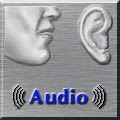|


|
Topic 2 Lesson 2
Units and dimensions, systems of units, dimensional homogeneity
Unit Design, Unit Types, System of Units
Basic Definitions
Dimension: any extent of time, space, energy, etc. which
can be measured or quantified. Simple dimensions include length, time,
mass, quantity, temperature. Derived dimensions arise from multiplying
or dividing simple or derived dimensions. Examples include volume, velocity,
density, and concentration.
Unit: a standard magnitude of a given dimension against
which other magnitudes of that dimension can be compared. Examples of
units for the dimension of length include millimeters, inches, feet,
meter, and light years .
Base units are fundamental units that form the foundation of a measurement system. All other units are defined in terms of the base units.
These simple dimensions include length, time, mass, temperature, electric
current, and light intensity.
A multiple unit is defined as a multiple or a fraction of a
base unit. For example, the base unit for time is the second in all
three of the systems of units discussed below. Examples of multiple
units for time include minutes, hours, days, milliseconds, microseconds,
etc.
A derived unit is obtained by multiplying or dividing base units
and multiple units. For example, all units for force are derived units.
Other derived units include the units for velocity, acceleration, flow
rate, concentration, composition, energy, density, heat capacity, pressure,
work, and volume.
Prominent Systems of Units
American Engineering System (AES)
Based on English system adopted in 1215
Centimeter-Gram-Second (CGS)
Established in France in 1790 for international use
Systeme Internationale (SI)
Developed in 1960 to clear up confusion in the CGS system
|